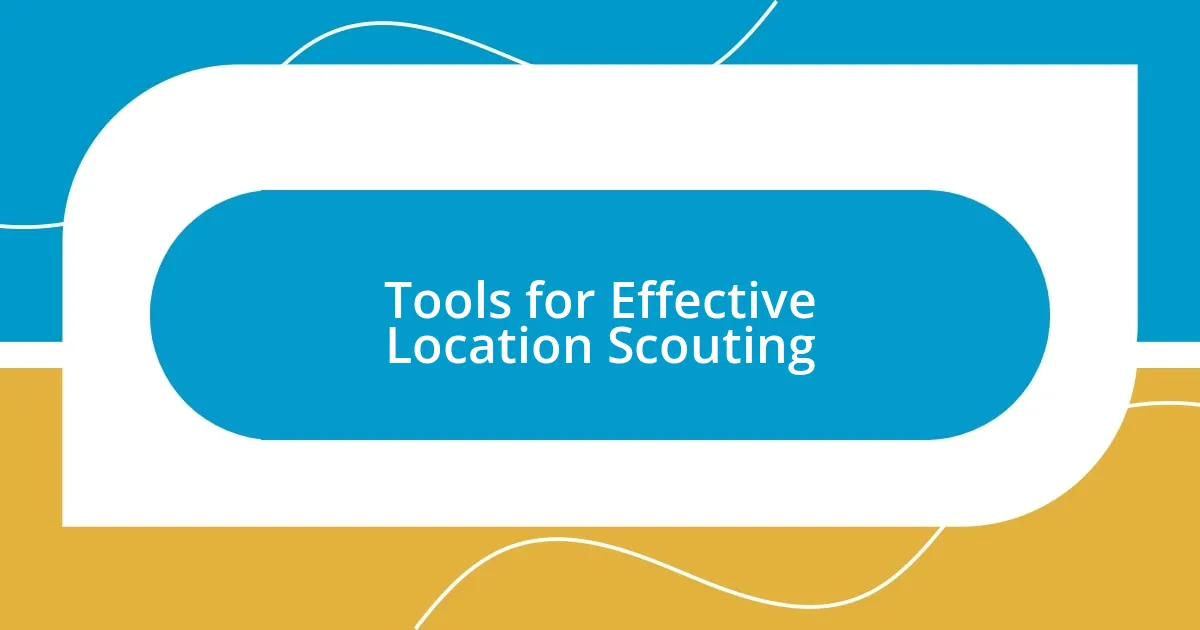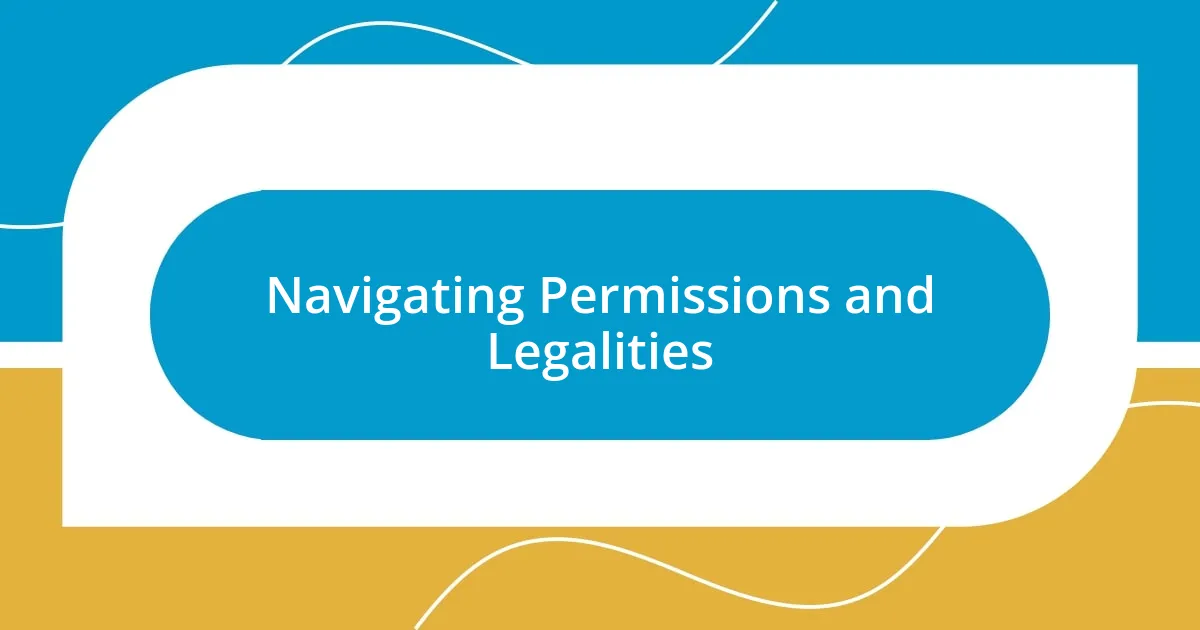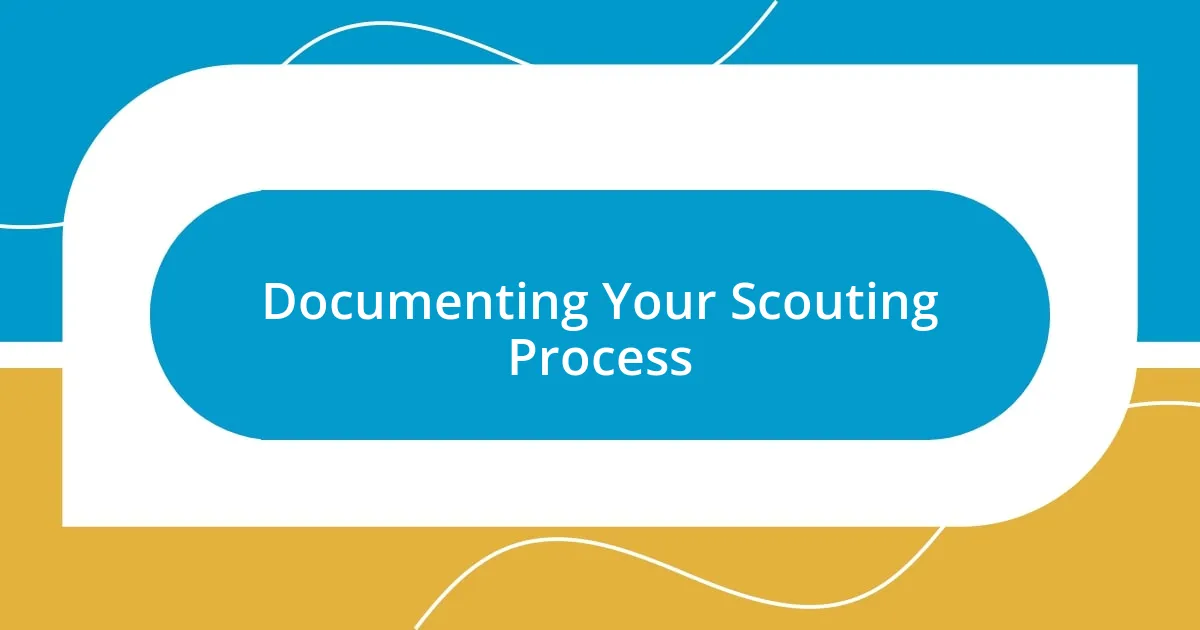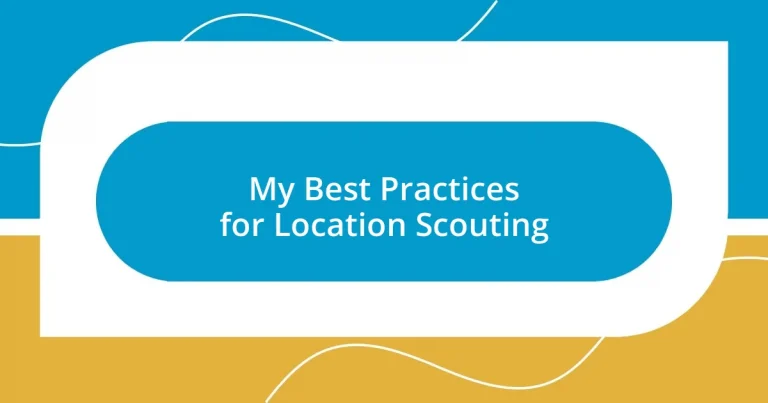Key takeaways:
- Location scouting enhances storytelling by creating an emotional connection to the space.
- Effective pre-scouting preparation significantly reduces logistical challenges during shooting.
- Utilizing technology and networking can lead to discovering unique and hidden locations.
- Thoroughly documenting the scouting process ensures valuable insights and references for future planning.

Understanding Location Scouting
Location scouting is more than just finding a pretty spot for a shoot; it’s about storytelling through space. I vividly recall my first time scouting for a documentary—every location I visited felt like a character waiting to be discovered. How can a space influence the narrative? I learned that the right location can shape emotions and compel viewers in ways I hadn’t anticipated.
In my experience, successful location scouting involves a mix of intuition and practicality. When I walked through a deserted warehouse for an art project, I could almost hear the echoes of creativity bouncing off the walls. This brought forth a realization: the vibe of a location can evoke powerful feelings. Can you imagine standing in a place that resonates with the essence of your story? It makes the entire creative process more authentic.
It’s also crucial to consider logistical elements like accessibility and permits; after all, the most stunning views won’t matter if they’re impossible to film. I once had my heart set on a breathtaking cliffside, only to discover that securing permission took weeks. The lesson? Balancing artistic vision with pragmatic details is key. What about you—have you ever been caught off guard by the practicalities of a chosen location?

Importance of Pre-Scouting Preparation
Pre-scouting preparation is essential; it sets the stage for a successful shoot and minimizes hiccups down the line. When I began scouting for a short film, I spent a significant amount of time understanding the narrative first. By immersing myself in the story, I was able to identify key visual elements that truly mattered. It was this groundwork that allowed me to select locations that weren’t merely beautiful, but rather enhanced the storyline.
Consider these vital aspects of pre-scouting preparation:
- Define your project’s narrative and visual style before heading out.
- Create a checklist of must-have shots and any specific location requirements.
- Research potential locations online to gather initial impressions and gather necessary contact info.
- Familiarize yourself with weather patterns, lighting conditions, and the time of day for optimal shooting.
- Reach out to local contacts or industry professionals for personal insights on locations.
I can’t emphasize enough how a bit of planning changes the game. I learned this the hard way when I ventured into a sprawling park without considering that certain paths were closed due to construction. Those unanticipated changes added hours to my day, and they could have been avoided with just a little foresight.

Tools for Effective Location Scouting
Having the right tools for location scouting can make all the difference. I remember the first time I used a location scouting app; I was amazed at how easy it was to document potential spots. The ability to take notes and attach photos instantly meant I could review everything later without the confusion of scribbled notes or hurried memory. Technology can simplify your scouting process dramatically.
When it comes to equipment, I recommend carrying a good DSLR camera or even a high-quality smartphone. A tool like a wide-angle lens can capture the vastness of a location, while a handheld drone allows for aerial shots that give a different perspective. Investing time in learning how to use these tools effectively can make your location scouting not just easier, but also more creative.
Lastly, don’t underestimate the power of networking tools. Apps that connect you with local filmmakers can lead to valuable insights about hidden gems in an area. My best discoveries often came from conversations with locals who shared their favorite spots—sometimes off the beaten path—leading me to create memorable scenes that felt authentic and lived-in.
| Tool | Purpose |
|---|---|
| Location Scouting Apps | Streamline documentation and provide maps and contacts. |
| DSLR Camera | Capture high-quality images and document potential locations. |
| Smartphone | Quickly take photos and notes on the go; ideal for easy access. |
| Drone | Offer aerial perspectives to showcase the landscape’s scope. |
| Networking Apps | Connect with local filmmakers for insider location tips. |

Techniques for Finding Unique Locations
One of my favorite techniques for finding unique locations is simply getting lost. On one of my scouting trips, I took a drive along a winding road, not really knowing where it would lead me. It was during this serendipitous adventure that I stumbled upon a breathtaking hidden lake, surrounded by towering trees. This spot ended up being one of the most pivotal scenes in my film, proving that sometimes stepping off the beaten path can yield the richest rewards. Have you ever considered the potential treasures waiting just beyond your usual routes?
Networking within local communities can significantly enhance your location scouting efforts. One time, I attended a local art fair where I struck up a conversation with an artist. This led to a recommendation for an abandoned railway station that I would never have discovered on my own. It was a stunning backdrop that not only showcased the region’s history but also provided an authentic vibe that truly elevated the project. How often do we miss out on hidden gems because we’re not open to chatting with the locals?
Another effective method is utilizing social media as a scouting tool. I remember scrolling through Instagram and coming across an account dedicated to exploring forgotten places. I reached out to the account owner, who generously shared tips on unique sites in my area. A simple DM turned into an unexpected partnership, leading to the discovery of a rooftop garden that perfectly fit my vision. It’s fascinating how digital platforms can bridge the gap between creativity and practicality, isn’t it?

Evaluating Location Potential
When evaluating location potential, I always start with the ambiance and energy of the space. I recall a time when I walked into an old warehouse that initially seemed unremarkable. However, the moment I stepped inside, the light pouring through the windows created a magical atmosphere that instantly sparked ideas. Have you ever felt that strong connection to a place? It can serve as the heartbeat of your project.
Next, I consider accessibility and practicality. While scouting a stunning cliffside view for a shoot, I had a moment of realization. Although the location offered breathtaking visuals, it was a logistical nightmare to reach. Assessing how easy it is for equipment and crew to access a location can be just as vital as its aesthetic appeal. I’ve learned the hard way that a perfect visual can sometimes come with hidden complications.
Lastly, I analyze the surrounding environment for potential distractions or interruptions during filming. I vividly remember a filming experience in a lively park where the joyous sounds of children playing became an unexpected character in my film. While it brought a lively element, it showed me the importance of being aware of ambient noise and activity levels. How often do we overlook these factors, only to encounter challenges later on? Trust me—taking the time to evaluate these could save you from a lot of headaches down the road.

Navigating Permissions and Legalities
Navigating the often murky waters of permissions and legalities is a crucial step in location scouting. I remember discovering a gorgeous, historical building that felt perfect for my project. However, after celebrating my find, I quickly realized that I needed to secure permits from the local heritage site management. This taught me the hard way that the excitement of a great location can quickly turn into frustration if you don’t anticipate the legal hurdles. Have you ever experienced such an oversight?
Understanding property rights is another essential aspect to consider. During one shoot, I was thrilled to use a vibrant street mural as a backdrop, only to later find that I hadn’t obtained permission from the artist. This situation not only led to an awkward confrontation but also forced me to scramble for a backup location. It’s moments like these that remind me how vital it is to clarify who owns the space before finalizing plans. How would you handle a situation like this if your chosen location suddenly became unavailable?
It’s also important to familiarize yourself with local ordinances and regulations, particularly if you’re filming in public spaces. I once orchestrated a shoot at a bustling urban intersection, thinking the energy would elevate the project. However, a lack of understanding about filming permits led to an unexpected encounter with local law enforcement, who kindly reminded me of the city’s strict guidelines. This experience reinforced for me the importance of doing thorough research beforehand. Have you ever felt the unexpected pressure of authority when you just wanted to create?

Documenting Your Scouting Process
Documenting your scouting process is something I’ve come to value deeply through experience. I always carry a notebook or use my phone to jot down thoughts immediately after visiting a location. It’s fascinating how those first impressions carry weight; I recall feeling invigorated after exploring a rustic barn. The details I captured then, like the way the sunlight danced off the weathered wood, helped me remember the emotions tied to that space when I looked back later.
Photos are equally important in my documentation routine. I often take multiple angles of a location to capture its essence. Just last month, I scouted a serene lakeside spot, and snapping pictures of the reflections in the water gave me fresh ideas for shots I hadn’t even considered initially. How do you envision utilizing a space? Having those visual references can spark creativity when it’s time to plan your shoot.
Additionally, I make notes about any logistical details or challenges encountered during the visit, like parking options or nearby facilities. It’s surprising how easy it is to forget a crucial detail like the absence of restrooms when you’re caught up in the beauty of a place. I once found a dreamy forest location, only to remember later that a hiking trail led directly through my set. Keeping everything documented not only saves time during production but also enriches the overall experience. What’s been your experience with memorable but tricky locations?












